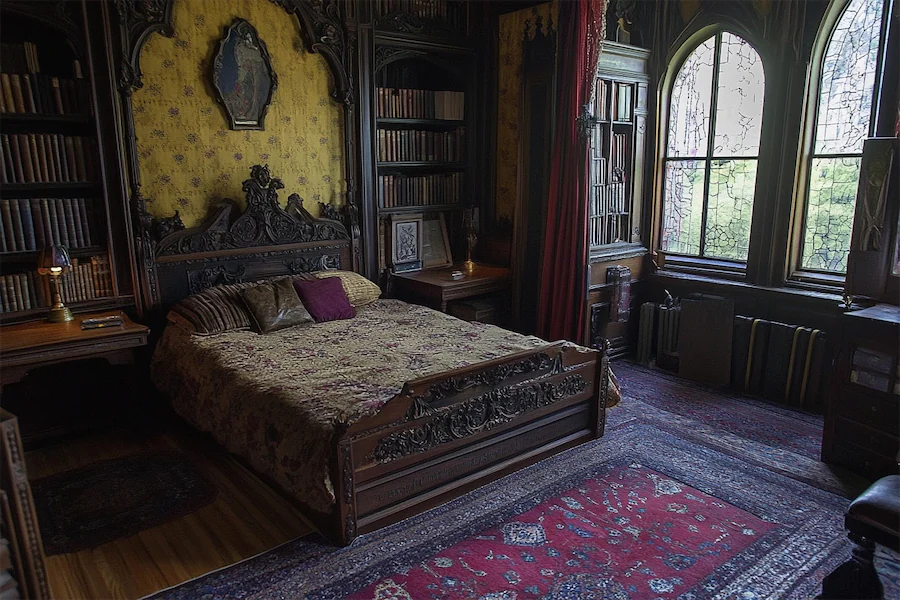Designing a Gothic-themed room for children combines the enchanting elements of Gothic aesthetics with the playful and comforting aspects suitable for a child’s space. This fusion creates a unique environment that is both imaginative and cozy.
Introduction to Gothic Kid Rooms
A Gothic kid room incorporates dark, rich colors, vintage furnishings, and mystical motifs to craft a space that is both whimsical and inviting. By blending traditional Gothic elements with child-friendly features, these rooms offer a distinctive atmosphere that stimulates creativity and provides comfort.
History and Origins of Gothic Design
Originating in the 12th century, Gothic architecture is characterized by grand arches, intricate carvings, and towering structures. This style experienced a revival in the 18th and 19th centuries, influencing literature, art, and interior design. In modern times, Gothic design has evolved to include various interpretations, such as the “whimsigoth” aesthetic, which merges Victorian and Gothic decor with warm, magical elements.
Key Features of a Gothic Kid Room
- Color Palette: Utilize deep hues like black, deep purple, and burgundy, balanced with lighter shades such as beige or pink to prevent the space from feeling too dark. This combination maintains the Gothic essence while ensuring the room remains suitable for a child.
- Furniture: Incorporate vintage or antique-style furniture with ornate details. Wrought-iron bed frames, wooden dressers with intricate carvings, and classic rocking chairs contribute to the Gothic ambiance. Ensure that all furniture pieces are safe and appropriately sized for children.
- Decorative Elements: Introduce Gothic motifs through wall art, patterned wallpapers, and textiles. Elements like damask patterns, mystical symbols, and celestial imagery add depth and interest to the room. Including whimsical items such as stuffed animals or fairy lights can soften the overall look, making it more child-friendly.
Applications of Gothic Design in Children’s Spaces
Implementing Gothic design in a child’s room can be both functional and aesthetic:
- Sleeping Area: A canopy bed with dark, flowing fabrics can serve as a focal point, providing a cozy and secure sleeping environment.
- Play Area: Create a nook with Gothic-inspired play tents or reading corners adorned with plush cushions and themed decor to encourage imaginative play.
- Study Area: A vintage desk paired with an ornate chair can make homework time feel special, fostering a love for learning in an inspiring setting.
Considerations When Designing a Gothic Kid Room
- Lighting: Balance the dark color scheme with adequate lighting. Incorporate both natural light and fixtures like chandeliers or sconces to maintain a warm and inviting atmosphere.
- Safety: Ensure all decorative items and furniture are child-safe. Avoid sharp edges, and secure heavy pieces to the wall to prevent accidents.
- Personalization: Involve the child in the design process. Allow them to choose certain elements or colors to ensure the space reflects their personality and preferences.
Conclusion
A Gothic-themed kid’s room offers a unique blend of elegance and playfulness, creating a space that is both functional and enchanting. By thoughtfully combining traditional Gothic elements with child-friendly features, you can design a room that inspires imagination and provides comfort, making it a cherished space for your child.
